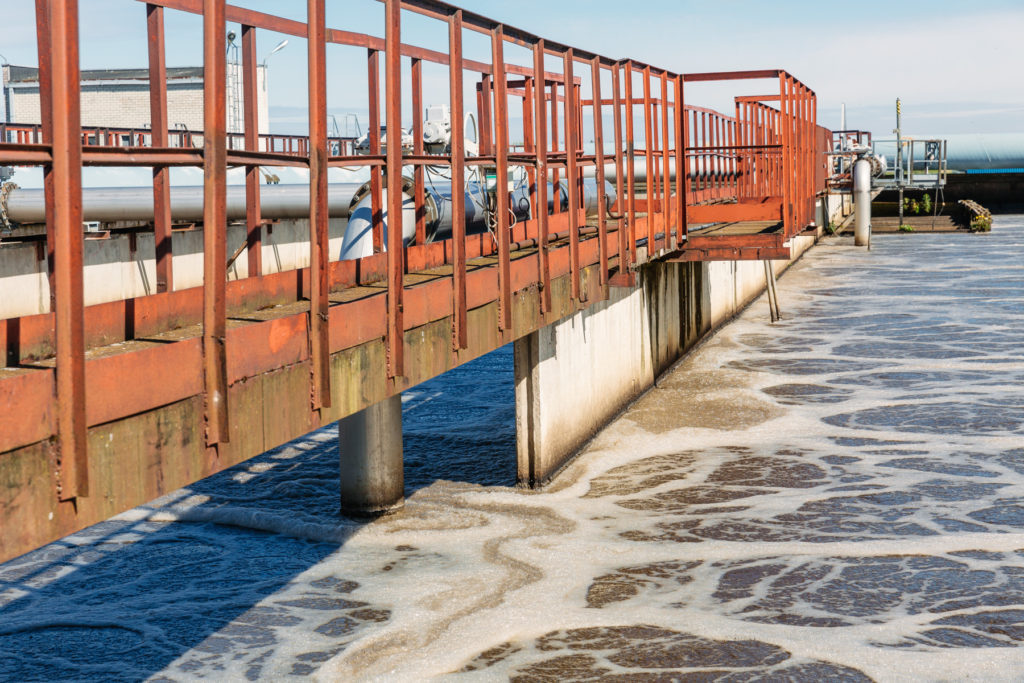Wastewater treatment process
Wastewater collected in Tallinn and its nearest surrounding areas is treated at our Paljassaare Wastewater Treatment Plant by using environment-friendly and modern technologies.
Wastewater and storm water reaches the plant by flowing through the sewerage network.
Main pumping station
All the wastewater collected via tunnel collectors is pumped into the wastewater treatment plant by using three pressure pipes.
Mechanical treatment
 Screenhouse
Screenhouse
By using 6 mechanical screens, larger debris (screenings) are removed from the incoming wastewater, which then are washed, pressed and taken to the landfill.
Grit traps
Grit that has been carried into sewerage with storm water is removed from wastewater, sediments from the grit traps are also taken to the landfill.
Primary sedimentation tanks
In primary sedimentation tanks, sedimentation is used to remove suspended solids (raw sludge) from wastewater. Fats and oils floating on surface are also removed here. Raw sludge that was removed is then directed to the sludge treatment process.
Chemical and biological treatment
Adding special water treatment chemical (coagulant) 
For better phosphorus removal, coagulant is added. Coagulant is a substance that aggregates around tiny particles, making them larger and heavier, and easier to remove from water.
Aeration tanks
Now the wastewater is conducted to the aeration tanks where nitrogen compounds are removed from wastewater biologically (i.e. with a help from bacteria). By using diffusers in the bottom of aeration tanks, large quantities of air is blown through the wastewater, and by adding also methanol, an effective biological treatment is ensured.
Secondary sedimentation tanks
Wastewater and the bacteria (activated sludge) is conducted to the secondary sedimentation tanks where activated sludge is separated from wastewater. Some of the sludge is returned to aeration tanks, while the excessive part of activated sludge (excess activated sludge) is directed to the sludge treatment.
Treated effluent pumping station
Thoroughly treated effluent is pumped via deep-sea outlet nearly 3 km away into the Bay of Tallinn.
Sludge treatment
Mixed sludge storage
In the sludge storage, the raw sludge removed from the primary sedimentation tanks is mixed with the excess activated sludge removed from the secondary sedimentation tanks.
Digesters
Mixed sludge is heated up to 37 oC and pumped into digesters for anaerobic fermentation (stabilisation). This process produces biogas that is used for heating the plant facilities.
Sludge dewatering
Stabilised sludge is pumped into centrifuges to remove excessive water. Before dewatering, a special chemical (flocculant) is added to sludge to facilitate the process. Dewatered sludge is taken to compost fields.
Making the compost soil
On the compost fields, dewatered sludge is mixed with peat. It takes 6-8 months for the compost soil to ripen, during that time the compost is periodically mixed. Compost soil that is ready gets distributed.

Did you know that …?
… Wastewater Treatment Plant in Paljassaare serves more than 400 000 people and receives also storm water discharged to the combined sewerage system.
… the by-product of the wastewater treatment process is sludge.
… since 2006, Tallinn is no longer in the list of ‘hotspots’ highlighted by HELCOM (Baltic Marine Environment Protection Commission). This is a great recognition of our investments made to continuously improve the wastewater treatment process.
 Screenhouse
Screenhouse
